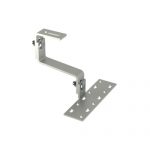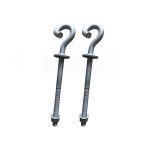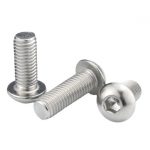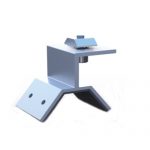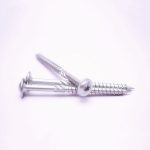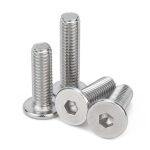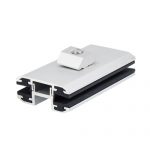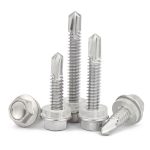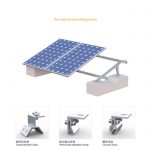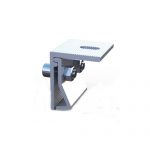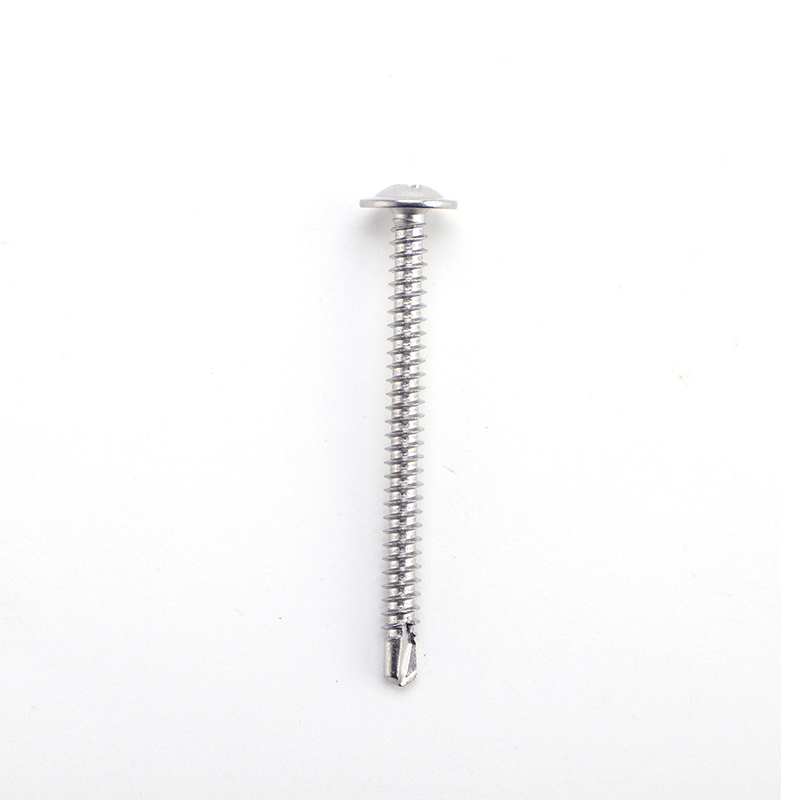
Standard: Philip or Pozi Pan Head Self Drilling Screw
GRADE: A2-70,A4-80
Material: stainless steel A2-304,A4-316,SMO254,201,202,410
Size:from #6 to #14, from 3.5mm to 6.3mm
Length:from 3/8" to 3",from 9.5mm to 100mm
Surface finish:Plain or Customized
Packing: cartons with furmigated pallets
Supply ability: 50tons per month
When it comes to fastening metal sheets, one of the best solutions is a pan head self-drilling screw. This type of screw combines drilling and tapping functions in one, saving you time and effort in the installation process. In this article, we'll explore everything you need to know about pan head self-drilling screws, including their features, benefits, and applications.
What is a Pan Head Self-Drilling Screw?
A pan head self-drilling screw is a type of screw that is designed to drill its own hole into the material being fastened, eliminating the need for pre-drilling. The pan head design provides a large bearing surface that distributes the load evenly, reducing the risk of material damage or deformation. These screws are commonly used in metal-to-metal or metal-to-wood applications where a secure and reliable connection is required.
Features of a Pan Head Self-Drilling Screw
- Pointed tip: The screw tip is designed to cut through the material and create a hole for the shank to pass through.
- Threaded shank: The shank is threaded to create a secure grip in the material being fastened.
- Pan head: The pan head design provides a large bearing surface and distributes the load evenly.
- Self-tapping: The screw taps its own threads as it is driven into the material.
Benefits of Using a Pan Head Self-Drilling Screw
- Time-saving: Since no pre-drilling is required, the installation process is faster and more efficient.
- Cost-effective: Eliminating the need for pre-drilling saves money on drilling tools and labor costs.
- Strong connection: The self-tapping feature creates a secure grip that holds up over time.
- Reduced risk of damage: The pan head design distributes the load evenly, reducing the risk of material damage or deformation.
- Versatility: Pan head self-drilling screws can be used in a variety of metal-to-metal or metal-to-wood applications.
Applications of a Pan Head Self-Drilling Screw
Pan head self-drilling screws are commonly used in the following applications:
- Metal roofing and siding installation
- HVAC ductwork installation
- Framing and construction
- Sheet metal fabrication
- Electrical panel installation
- Automotive assembly
How to Choose the Right Pan Head Self-Drilling Screw
When selecting a pan head self-drilling screw, consider the following factors:
- Material thickness: Choose a screw with a length that is suitable for the thickness of the material being fastened.
- Material type: Select a screw that is compatible with the type of material being fastened (i.e. steel, aluminum, wood).
- Head type: Pan head screws are ideal for applications where a large bearing surface is required, while countersunk screws are better suited for flush-mounting applications.
- Thread type: Choose a thread type that is appropriate for the application (i.e. fine thread for thin materials, coarse thread for thicker materials).
- Coating: Select a coating that is appropriate for the application environment (i.e. zinc plating for indoor use, stainless steel for outdoor use).
Installation Tips for Pan Head Self-Drilling Screws
Here are some tips to ensure proper installation of pan head self-drilling screws:
- Use a drill/driver: A power drill/driver with a screwdriver bit is the most efficient way to install pan head self-drilling screws.
- Align the screw: Make sure the screw is aligned with the desired location and angle before starting to drive it in.
- Apply pressure: Apply steady pressure to the drill/driver to keep the screw from wobbling or jumping.
- Stop at the right depth: Stop driving the screw when the head is flush with the surface being fastened.
- Use the right torque: Over-tightening the screw can cause the material to deform or strip the threads, while under-tightening can result in a loose connection.
Common Problems with Pan Head Self-Drilling Screws and How to Avoid Them
- Stripped threads: To avoid stripped threads, choose a screw with the appropriate thread type for the material being fastened and use the correct torque.
- Material deformation: Apply steady pressure and avoid over-tightening to prevent material deformation.
- Screw breakage: Use the appropriate length of screw for the material thickness to avoid breaking the screw.
Maintenance and Care for Pan Head Self-Drilling Screws
Pan head self-drilling screws require minimal maintenance, but here are some tips to ensure they continue to perform well:
- Check the screws regularly: Inspect the screws periodically to ensure they are still tight and not showing signs of damage.
- Replace damaged screws: If a screw is damaged or has stripped threads, replace it immediately to ensure a secure connection.
- Store in a dry location: Keep the screws in a dry location to prevent rust and corrosion.
Pan Head Self-Drilling Screw vs. Other Types of Screws
Compared to other types of screws, such as wood screws or sheet metal screws, pan head self-drilling screws offer several advantages:
- Eliminates the need for pre-drilling, saving time and money
- Provides a larger bearing surface, reducing the risk of material damage or deformation
- Creates a self-tapping thread, providing a secure grip that holds up over time
Conclusion
Pan head self-drilling screws are a reliable and efficient solution for fastening metal sheets. They offer several advantages over other types of screws and are commonly used in a variety of applications. By following the proper installation and maintenance tips, you can ensure that your pan head self-drilling screws provide a strong and long-lasting connection.
FAQs
Can pan head self-drilling screws be used on wood?
Yes, pan head self-drilling screws can be used on wood as well as metal.
What is the difference between a pan head screw and a countersunk screw?
A pan head screw has a large, flat bearing surface, while a countersunk screw is designed to be flush-mounted with the surface being fastened.
Can pan head self-drilling screws be used in outdoor applications?
Yes, pan head self-drilling screws can be used in outdoor applications if they are made of a rust-resistant material such as stainless steel.
What is the maximum thickness of material that pan head self-drilling screws can fasten?
The maximum thickness of material that pan head self-drilling screws can fasten depends on the length and thickness of the screw. It is important to choose a screw with the appropriate length for the material being fastened.
How can I tell if a pan head self-drilling screw is damaged?
Inspect the screw for signs of damage such as stripped threads, bending, or rust/corrosion.

